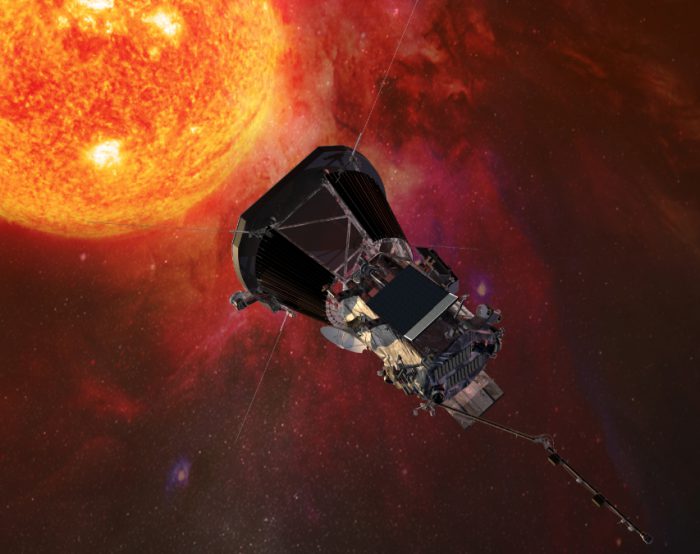Here at OWLconnected, we talk about space exploration a lot. Why? Well, for starters, it's a whole lot of fun to think about. But we're also living in an incredible age of discovery in our solar system. Whether it's Saturn, Jupiter, the asteroid belt, or Pluto and beyond, it feels like probes are being sent everywhere.
Everywhere, that is, except the Sun. And it has always been understandable why. It's so unbelievably hot. What machine could possibly survive a trip to an actual star? That's impossible, right? Well, we hope that you're sitting down, because we have thrilling news.
Yesterday, May 31, NASA announced that in 2018 it is launching the Parker Solar Probe on a mission to "touch the Sun".
Geez, we're sweating just thinking about it! How is this going to work? Let's check it out.
Lucky solar sevens
The probe will use orbits around Venus to slow and control its approach to the Sun. (Getty Embed)
For this groundbreaking probe, seven is the key number. On its seven-year mission, it will fly past Venus seven times to adjust its speed and direction for its final approach...which will take it seven times closer to the Sun than any human-made object in history. And how close is seven times closer?
When we say that it is coming within 6.5 million km (4 million miles) of the Sun's surface, that may not sound that impressive. (I thought NASA said they were "touching the Sun!") But the probe will actually be inside the Sun's atmosphere, or corona, which extends many millions of kilometres from the surface. And, even more important, the corona is HOTTER than the Sun's surface. Much hotter. Maybe NASA is throwing all of those sevens into the mission because it will need all the luck it can get!
Shielding the instruments
As you can tell from this image, the Sun's corona is a pretty intense place! (Getty Embed)
In truth though, NASA isn't leaving anything to chance. Instead of luck, a 11.5 cm (4.5 inch) heat shield will be used to protect all of the Parker Probe's sensitive instruments. If it all goes according to plans, the instruments will stay at about room temperature, while the surface of the shield will reach over 1400°C (2550°F)!
That's a good thing, too, because these instruments will be busy. They will gather information about electronic particles coming from the Sun, its supersonic solar winds, get images of the star, and so much more. NASA hopes to leave knowing much more about space weather, especially how to protect satellites, space craft, and astronauts from deadly solar radiation and flares.
A tribute to a solar innovator
Dr. Eugene N. Parker at the announcement of the probe in Chicago on Wednesday, May 31. (Getty Embed)
The name Parker Solar Probe is not a random choice (nor is it a nod to Spiderman's alter ego!). Dr. Eugene N. Parker is an 89 year-old solar astrophysicist from the University of Chicago. His revolutionary work started in the 1950s, when he began writing papers that suggested that there were solar winds that carried particles from the Sun deep into the solar system. Few people took his work seriously at first. But Parker kept at it. By the late 1960s, his work had changed science's understanding of the Sun completely. Today, he is known as a leading expert on the topic...as well as the perfect for this probe to be named after.
Get more of a lowdown on this project with this video! (How amazing is it that this is going to happen?)
 An artist's impression of the Parker Solar Probe approaching... the Sun! Whoa! (Johns Hopkins University Applied Physics Laboratory)
An artist's impression of the Parker Solar Probe approaching... the Sun! Whoa! (Johns Hopkins University Applied Physics Laboratory)










🙄 🙄 🙄 🙄 🙄
🙄 🙄 🙄 🙄 🙄 💡 💡 💡 💡 😆 😆 😆 😆 😳 😳 😳 😳 😳 😳
I will like to go to the venus.
i will go to the moon.
I will go to the mercury.
i will visit mars.
Hot
😯